Discover the Advantages and Disadvantages of Cooking in Clay Pots
Are you tired of eating the same old boring meals every day? If yes, then have you ever thought about the advantages and disadvantages of cooking in clay pots? No? Well, let me tell you, it’s a game changer.
Now, I know what you’re thinking. “Why would I want to cook in a clay pot? Can’t I just use a regular pot or pan?” Sure, you could, but where’s the fun in that?
First of all, it’s all about the flavor, baby. Clay pots are porous, which means they absorb moisture from your food as it cooks. This makes your meals more flavorful and juicy. Yum! Plus, clay pots retain heat really well, so your food stays nice and warm even after you turn off the heat.
But, like with most things in life, there are also some downsides to cooking in a clay pot. For one, they’re pretty delicate. You can’t just toss them around like you can with a metal pot. Also, they can be a bit finicky to clean.(Guide On How to clean clay pots) But hey, if you’re willing to put in the extra effort, trust me the delicious results are totally worth it.
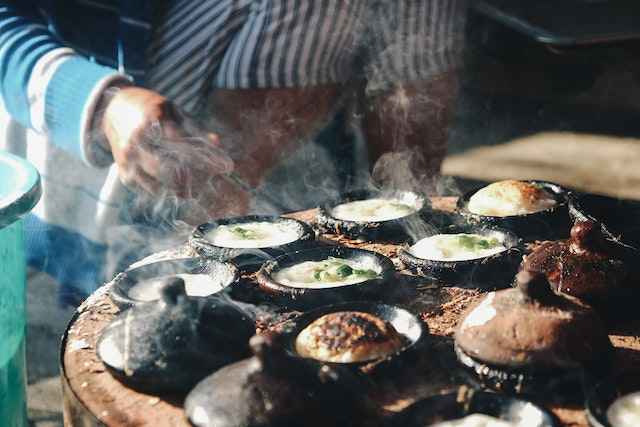
What is Cooking in Clay Pots?
I enjoy cooking in clay pots, or clay pot cookery, as an Indian. It is a traditional way of cooking meals in unglazed clay pots or casseroles constructed from natural ingredients like clay, sand, and water. These pots are permeable, which allows them to absorb moisture from food as it cooks, resulting in uniformly cooked, tasty and soft food.
When I use a clay pot to cook, I usually add the meal to the pot along with some liquid or sauce and then top it off with a lid. Then, I set the pot over low to medium heat and let the food cook slowly so that the flavours can meld and permeate the dish. The majority of Indian households adopt this method of cooking, which is excellent for making stews, soups, and slow-cooked meals as well as for baking bread and desserts.
Cooking in a clay pot keeps the nutrients and flavours of the ingredients while also being a healthier technique of cooking because it requires little to no additional fat or oil. Clay pots, however, can be delicate, so they need to be handled and cleaned with extra care.
What are the advantages and disadvantages of Cooking in Clay Pots?
There are several advantages and disadvantages to cooking in clay pots.
Advantages of Cooking in Clay Pots (Top 5 Benefits of Cooking with Clay Pots)
- Flavorful and Tender Results: Clay pots are porous and absorb moisture as food cooks, which results in more flavorful and tender dishes that are cooked evenly.
- Retains Nutrients: As the food in clay pot is cooked slowly, the nutrients in the food are retained, making it a healthier anf tasty option.
- Little to No Added Fat or Oil: Clay pot cooking requires little to no added fat or oil, which can give us an amazing healthy food.
- Versatile: Clay pots are very veratile they can be used for a variety of dishes, from stews and soups to bread and desserts.
- Environmentally Friendly: Cooking in clay pots is an environmentally friendly option, as it doesn’t require electricity or gas to cook.
Disadvantages of Cooking in Clay Pots
- Fragile: Clay pots are fragile and can break easily if not handled carefully which is one of the biggest disadvantage of cooking in clay pot.
- Time-Consuming: Cooking in clay pots can be time-consuming, as the food needs to be cooked slowly over low heat.
- Tricky to Clean: Clay pots can be difficult to clean, as they cannot be washed with soap and require some extra care.
- Limited to Certain Foods: Clay pots are best suited for certain types of dishes, such as stews and soups, and may not be ideal for other types of cooking, such as frying or sautéing.
- Requires Some Skill: Cooking in clay pots requires some skill and practice, as the temperature and cooking time need to be carefully monitored to achieve the best results.
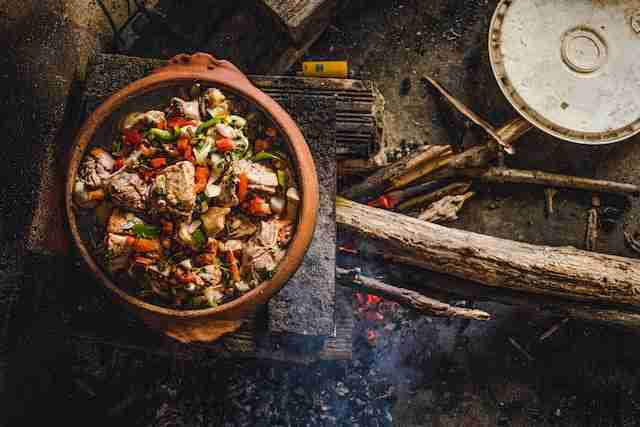
You can also check our other trending articles:- 1.Best Cast Iron Cookware India 2.Best Stainless Steel Gas Stove 3.Best Gas Stove Under 3000 4.Best 2 Burner Gas Stove
(Caring for Clay Cookware) How to clean clay pots for cooking?
- Rinse your clay pot with warm water to get rid of any loose dirt or debris.
- Use a scrub brush or a non-abrasive sponge to gently scrub off any stubborn food residues.
- Avoid using soap or any harsh chemicals as your clay pot is porous and can absorb them.
- If needed, you can use a mixture of baking soda and water to remove any remaining stains.
- Rinse the pot thoroughly with warm water and let it air dry completely before storing it.
- Remember to never place a hot clay pot in cold water as it can cause it to crack or break.
- To maintain the longevity of your clay pot, avoid using metal utensils that can scratch the surface of the pot.
Best clay pots for cooking in India
Following are some of the best clay pots for cooking available online.
1. Swadeshi Blessings Exclusive Range Unglazed Clay Handi/ Earthen Kadai
2. Craftsman India online Pottery Earthen Kadai/Clay
3. Craftsman India Online Unglazed Terracotta Clay Pottery Mud Pot/Earthen Handi for Cooking
4. PALVIT CLAY ART GALLERY (P.C.A.G) Clay Curd Pot
5. Craftsman India online Unglazed Clay Handi/Earthen Pot for Cooking with Lid (Red, 2 L) (clay)
Glazed vs unglazed clay pots for cooking
In Indian cooking, unglazed clay pots are commonly used to slow-cook dishes like biryanis, curries, and lentil stews. These pots are made of porous clay that absorbs water and allows steam to escape during cooking, which helps to tenderize meat and infuse the dish with rich flavors.
Unglazed clay pots can be soaked in water before to use to prevent cracking while cooking .This also offer a natural flavour to your food. They can be challenging to clean though because they eventually pick up smells and aromas.
On the other hand, glazed clay pots are non-porous and do not absorb flavors or aromas. They work well for baking desserts and bread, which need an equal spread of heat. Nonetheless, they are often more expensive than plain clay pots.
Generally, the choice between glazed and unglazed clay pots for Indian cooking relies on the type of dish you are making and your own preferences. Unglazed clay pots might be a preferable option if you enjoy savoury recipes that are cooked slowly. Glazed clay pots might be a preferable choice if you prefer baked items that are cooked consistently or are preparing a dish that needs consistent dispersion of heat.
Frequently Asked Questions
What are clay pots made of?
Earthenware clay, a type of ceramic material, is used to create clay vessels. Objects made from clay are hard and long-lasting because the clay is combined with water, moulded, and burnt at a low temperature in a kiln. In some cases, a liquid glass glaze may be applied to them as well.
Is cooking in clay pot safe?
A clay pot is a safe way to cook food. Over the years, people all across the world have relied on clay pots as a reliable and versatile method of preparing food. The products are chemical-free and created from all-natural ingredients. Meals prepared in clay pots retain moisture and are evenly cooked, making them a healthy and delicious option.
Is it safe to use clay pots on gas stove?
If the clay pot was made specifically for use on the cooktop, then it is safe to use on a gas range. Although clay containers may endure high temperatures, they should be used and cared for in accordance with the manufacturer’s guidelines to avoid damage.
4. How to clean clay pots to ensure longevity?
To ensure longevity of clay pots, it is important to clean them properly. After use, allow the pot to cool down to room temperature. Then, gently scrub the pot with warm water and a soft brush or sponge.
Do not use harsh chemicals or abrasive materials that can damage the clay. After cleaning, allow the pot to air dry completely before storing it in a cool, dry place. Additionally, it’s a good idea to season the pot with oil before using it for the first time and periodically thereafter.
Conclusion
Personally, I love cooking in clay pots. The natural flavor infusion and even heat distribution make my meals taste so much better. However, I have to admit that the delicate nature of the pots and the need for careful handling and cleaning can be a bit of a hassle.
Despite this, I still think that the delicious results are worth the extra effort. If you’re looking to switch up your cooking game, I highly recommend giving clay pots a try. Who knows, it might just become your new favorite way to cook!








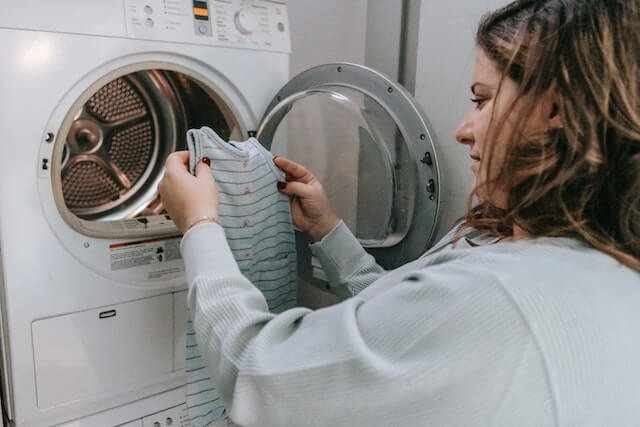

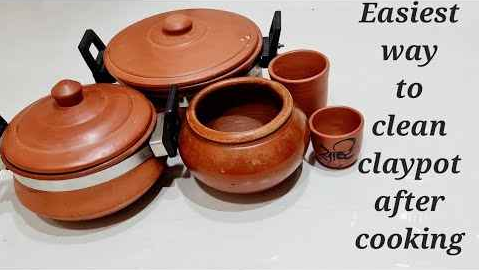
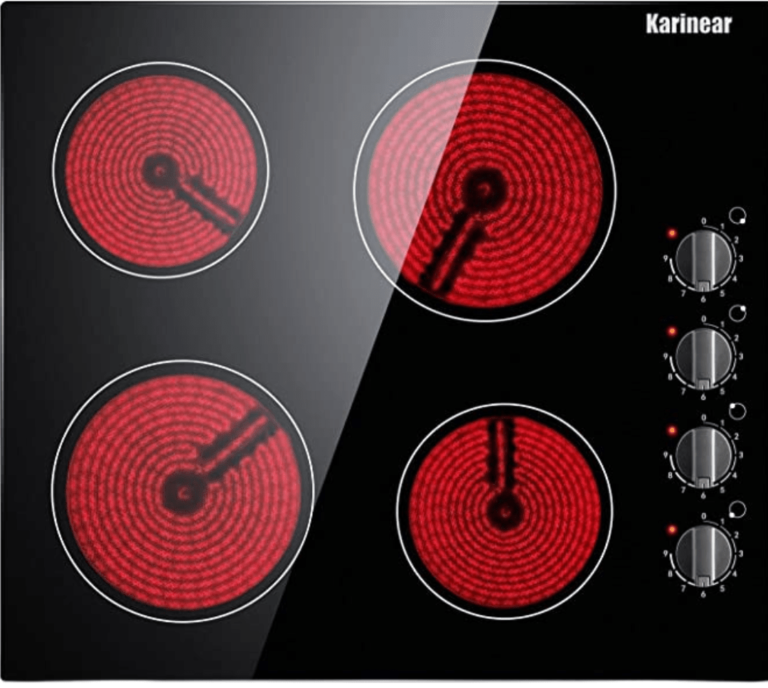
One Comment
Comments are closed.